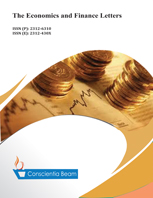Optimal Consumption and Portfolio Choice: The Impact of Health and Health Risk
DOI:
https://doi.org/10.18488/journal.29.2021.82.266.276Abstract
This paper investigates the effect of health and health risk on households’ optimal consumption and portfolio allocations over the life cycle. The simulation results show that consumption, savings in bonds, and savings in stocks all increase in health. Compared with poor health households, the healthy households consume 49% higher, invest 27% and 39% more in bonds and in stocks, respectively. The risky portfolio share, which is the ratio of stocks to the total financial assets is positively related with health for most of the lifetime. Regarding the age profile, it demonstrates the same tendency for both health levels: at the very young age, the risky portfolio share is relatively high. Starting from the middle age, this share falls significantly and keeps steady until the end of life. These results emphasize the importance of health and its associated risk in consumption and portfolio decisions. With all other things equal, households’ consumption and investment behaviors are heterogenous across health. It also provides significant policy applications: by promoting health and reducing health risk, it would largely improve households’ well-being: higher consumption, and more savings in financial assets.

